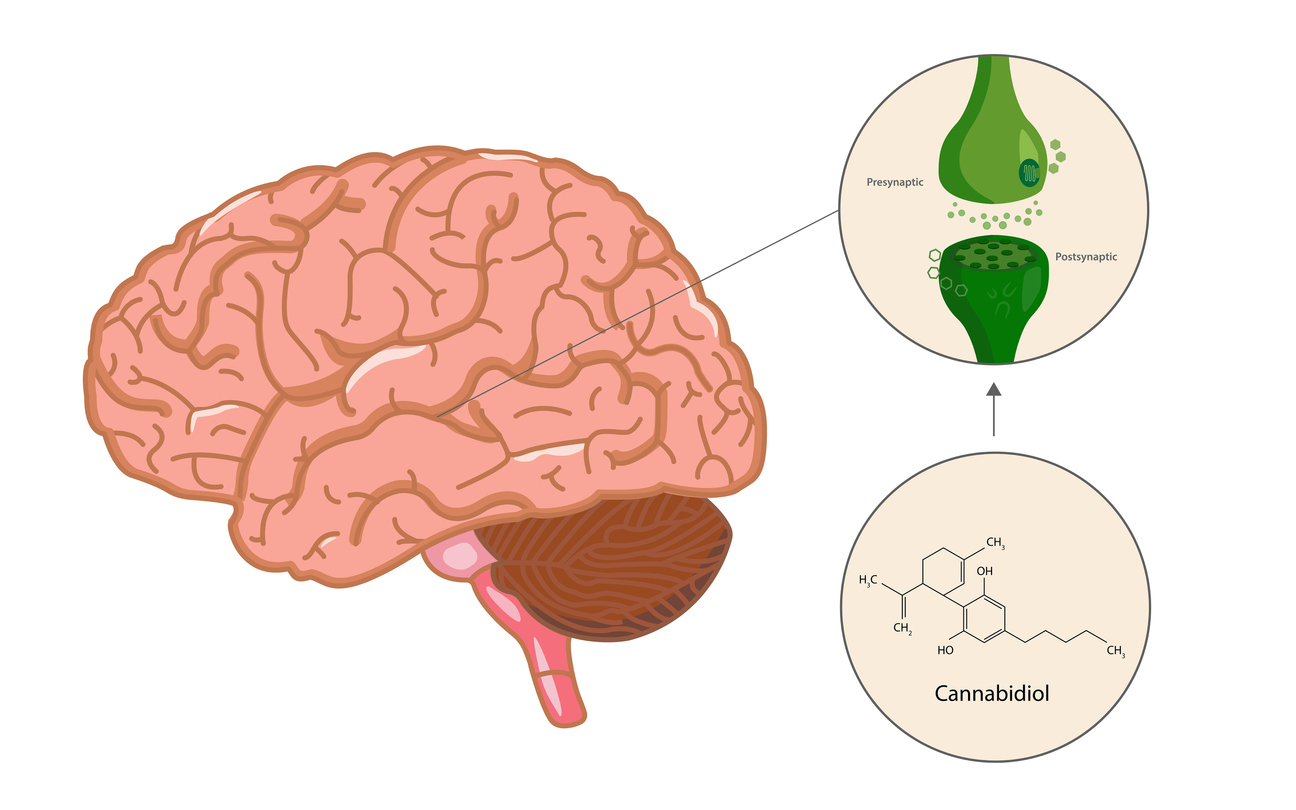Osteoporosis, one of the most common conditions associated with aging, is characterized by excessive loss of calcified matrix and collagenous fibers of bone. Holes or pores are formed as bone tissue is lost, increasing the risk of fracture.
Osteoporosis may be primary or secondary. Primary osteoporosis, as defined by western medicine, is of unknown origin, occurs with aging, accelerates with menopause, and has no direct or singular cause. There are two types of primary osteoporosis, Type I, which involves losses of trabecular bone, and Type II, which involves losses of cortical and trabecular bone. Secondary osteoporosis has a direct cause. It can be due to endocrine abnormalities, bone marrow disorders, connective tissue disorders, gastrointestinal disorders, renal disorders and some prescription drugs. An effort should be made to rule out the above anytime excessive bone loss occurs.
Nutrition, lifestyle and genetics contribute to the pathogenesis of osteoporosis. Primary osteoporosis can be prevented through proper diet, supplementation and lifestyle modifications. Many nutrients are required to build bone. The minerals boron, calcium, copper, magnesium, manganese, phosphorus, silica, and zinc; the vitamins A, B6, B12, C, D, folic acid, K; and essential fatty acids are all involved in the bone building process.
The standard American diet is deficient in many of the above nutrients, and thus conducive to poor bone health. This diet also contains many excesses that can be considered as bone robbing. The high phosphoric acid content of many American diets due to the consumption of excess soda and other carbonated beverages has been linked to a higher rate of bone fractures. The high content of sodium from consuming processed foods results in a 20 percent increase in urinary calcium. High sugar intake increases urinary excretion of calcium, magnesium, chromium, copper and zinc. Diets high in the wrong types of fat (trans-fatty acids, hydrogenated, high quantity of saturated) may result in an increased incidence of osteoporotic fracture. To the contrary, essential fatty acids are important for bone health. In some cases, excess protein consumption may induce a condition called acidosis. The effects of which include increased leaching of calcium from bone.
Protein controversy
Research has pushed to and fro regarding protein intake and bone loss. Some studies show that a high intake of protein from animal sources (milk, eggs, meat) increases calcium loss in the urine, threatening bone health. While other studies indicate that protein intake from food sources (particularly meats) have a negligible effect on calcium status and argue that the studies that find high protein intakes increase urinary calcium excretion are based on protein powders and not animal foods. Furthermore, diets very low in protein, such as vegan diets, or strict vegetarian diets, have been shown to promote bone loss over time.
Let’s look to the past to learn more about the present association of calcium and protein. The question of high levels of protein in the diet and the issue of calcium excretion is of particular interest in light of Paleolithic diet research for two reasons. First, because estimates of the levels of protein–and specifically animal protein–in the human diet during at least the last 1.7 million years of human evolution (from the time of Homo erectus) are much higher than considered prudent in some sectors of the nutritional research community today. Secondly, at the very same time, the fossil evidence shows Paleolithic humans to have had high bone mass that would have been robust and fracture-resistant compared to that of modern Western humans: in exact opposition to some of current nutritional theory about the alleged role of protein in causing osteoporosis. Let’s examine this apparent paradox.
Our hunter-gatherer ancestors certainly consumed a high intake of animal protein. However, they also had low intakes of sodium, higher magnesium, higher boron and higher vitamin K intakes than their modern counterparts. Estimates of calcium intake show that our hunter-gatherer ancestors consumed a diet rich in calcium from plant sources. Plant sources of calcium, such as collard greens and kale, can provide as much as a 55 percent absorption rate, compared to only 30 percent absorption rate from dairy. So, while our ancestors consumed large amounts of protein, yet had strong bones, we must note that their diet was better for bone health than our current standard American diet.
Although dietary calcium intake is most often the focus of nutritional recommendations for osteoporosis, what’s important is the calcium balance, not just vitamin D into its active form, and is required by an enzyme necessary for the formation of new calcium crystals. It is easy to understand why a deficiency of this one mineral can result in vitamin D resistance syndrome, hyperparathyroidism (in which excess parathyroid hormone is produced, causing the withdrawal of calcium from bone) and thus is a causative factor in osteoporosis.
Hypochlorhydria (low stomach acid) may also lead to deficiencies, since an acid medium is required for the absorption of certain minerals, especially calcium. Calcium citrate or citrate malate may circumvent low stomach acid production as a route to absorption. However, it is better to correct the underlying problem as it can lead to other chronic conditions.
Anaerobes and bone health
Bacterial overgrowth of the small intestine is a serious digestive disorder that can inhibit nutrient absorption and lead to many health problems. Although widespread, it is frequently unsuspected in cases of chronic bowel problems and carbohydrate intolerance because its symptoms often mimic other disorders. What does this have to do with bone health? According to a new study by gastroenterologists at the University of Pavia in Italy, bacterial overgrowth of the small bowel may significantly increase the risk of progressive bone thinning. Using hydrogen breath testing, researchers identified fourteen patients with bacterial overgrowth of the small intestine. Researchers also measured bone density in these patients and in healthy controls. Based on World Health Organization criteria, researchers found that 86 percent and 93 percent of patients with small intestine bacterial overgrowth had significant bone loss near the hip (proximal femur) and lower back (lumbar spine), respectively. In fact, these patients were more than twice as likely to have bone loss than healthy controls. Their bone loss also tended to be more severe (American Journal Gastroenterology 2000;95(12)). Although underlying mechanisms are still unclear, researchers postulated that bacterial overgrowth in the small bowel could trigger bone loss by promoting calcium malabsorption as well as the loss of key enzymes in the small intestine.
Diet and supplementation
Since each individual has a unique biochemistry, a proper bone building diet must incorporate healthy foods that contain all essential nutrients, specifically tailored and adjusted for food sensitivities, allergies, carbohydrate sensitivity, level of activity and current state of health. One’s diet should be based on fish, poultry, lean meats, eggs, low fat dairy (if not allergic) or dairy substitutes formulated to match the nutritional profile of dairy (soy milk, rice milk, etc.), legumes (especially those containing isoflavones), whole grains, seeds, nuts, cold pressed oils (such as flax) and vegetables (especially dark leafy greens).
Supplementation should be considered to ensure that all essential nutrients are acquired in optimal amounts. Totals from food should be factored in prior to choosing a dosage. Doses should be adjusted for each individual by a certified nutritionist.
Adult recommendations:
Boron- 5mg
Calcium– 500mg to 800mg
Copper- 2mg
Magnesium– 400mg to 600mg
Manganese- 2mg to 5mg
Zinc– 15mg
A- 10,000IU
B6– 50mg
B12– 50mcg to 5,000mcg
C– 1,000mg to 2,000mg
D– 2,000IU to 5,000IU (get levels checked)
Folic acid- 400mcg to 800mcg
K– 70mcg to 140mcg
All essential bone building nutrients can be found in Dr. Hoffman’s own Osteosupport.
Ipriflavone: the good, the bad and the ugly
Isoflavones are compounds found in some plants that are analogous in structure to the estrogens found in animals and humans. Ipriflavone is a synthetic isoflavone synthesized from daidzein, an isoflavone of soy. Many researchers are increasingly touting the benefits of ipriflavone for prevention and treatment of osteoporosis and other metabolic bone diseases, including Paget’s disease, and hyperparathyroidism. But what are the facts?
The isoflavone ipriflavone has been found to stimulate the activity of bone building osteoblasts in several studies, and inhibit the effects of osteoclasts, the cells responsible for bone resorption.
Preliminary studies have also found ipriflavone effective in preventing bone loss associated with chronic steroid use, immobility, oophorectomy and renal osteodystrophy. While ipriflavone appears to enhance estrogen’s effect, it does not possess intrinsic estrogenic activity, making it an attractive adjunct or alternative to conventional hormone replacement therapy.
In one study, researchers who previously found that 0.625mg per day of conjugated equine estrogen (CEE) did not prevent bone loss the first year after oophorectomy, discovered that adding 600mg of ipriflavone to the same treatment resulted in inhibitory action of CEE and ipriflavone on the turnover of bone metabolism, and stimulatory action of ipriflavone on bone formation. They concluded that concomitant use of ipriflavone with CEE at an early stage after oophorectomy inhibited bone loss, and was considered to be effective in maintaining bone mass after oophorectomy.
In a study to assess the effects of ipriflavone administration in the prevention of the rapid bone loss that follows oophorectomy in women, patients received either 500mg of elemental calcium or 600mg of ipriflavone in addition to the same daily calcium supplement for 12 months. At the conclusion of the study the data indicated that ipriflavone can restrain the bone remodeling processes, and radial bone density showed no significant modification during the 12-month study period. The researchers concluded that these results demonstrate that ipriflavone administration may prevent the rapid bone loss that follows oophorectomy. In addition, they suggested that ipriflavone might represent an attractive alternative for the prevention of osteoporosis in postmenopausal women with contraindications to estrogen replacement therapy.
In a randomized controlled trial designed to see whether oral administration of ipriflavone could prevent bone loss occurring shortly after menopause, 56 women with low vertebral bone density, and with a postmenopausal age less than five years, were randomly allocated to receive either ipriflavone, 200 mg three times daily, or a placebo. All subjects also received 1,000 mg of elemental calcium daily. At the conclusion of the study, vertebral bone density declined after two years in women taking only calcium, but it did not change in those receiving ipriflavone. The researchers concluded that ipriflavone prevents the rapid bone loss following early menopause by reducing bone turnover rate.
The aim of a study at Cattedra di Medicina Interna, University of Rome, was to evaluate the effects of ipriflavone treatment on bone remodeling in primary hyperparathyroidism. Upon completion of the study, the researchers concluded that ipriflavone is indicated in the treatment of metabolic bone diseases characterized by a high bone turnover, since the data suggest that ipriflavone affects bone remodeling by inhibiting bone resorption without affecting bone formation.
In two double-blind studies, 149 osteoporotic women with vertebral fractures, age 65-79, received either 600mg of ipriflavone or a placebo. Both groups received 1,000mg of elemental calcium. Urinary hydroxyproline was significantly decreased in ipriflavone treated patients, suggesting a reduction in bone turnover rate. A reduction of incident vertebral fractures was observed in ipriflavone treated women compared with control subjects. The data indicated that long-term treatment with ipriflavone may be considered safe, and may increase bone density, and possibly prevent fractures in elderly patients with established osteoporosis.
However, not all studies are favorable. According to a study in The Journal of the American Medical Association (March 21, 2001;285:1482-1488), ipriflavone appears ineffective, based on the results of a three-year study in Denmark. Researchers studied a group of 474 postmenopausal women. The women received either 600 mg of ipriflavone daily or a placebo daily for three years. In addition, all women took 500 mg of calcium daily. Researchers measured the women’s bone density at three different sites (spine, hip and forearm) every 3 months. No difference in bone density was seen between the two groups.
Researchers even found some women who took the supplement experienced a drop in their white blood cell counts, a condition that can impair the immune system. About 13 percent of women on ipriflavone developed lymphocytopenia, a drop in white blood cells that, in most of these cases, resolved after the women stopped taking ipriflavone. A drop in white blood cells can suppress immune function.
According to the researchers, although earlier studies have suggested ipriflavone does fight bone thinning, these findings suggest that compared with other osteoporosis treatments, ipriflavone offers little benefit. Discuss this issue with your doctor prior to supplementing with ipriflavone.
Live and learn
Lifestyle factors negatively and positively affect bone health. Smoking is toxic to the liver, depletes the body of vitamin C and decreases blood levels of estrogen. Alcohol inhibits the absorption and increases the excretion of calcium, magnesium, C, zinc, copper and inhibits B6 functioning. Inactivity is associated with poor bone health. However, regular strength training sessions, three to four times per week, will help increase bone formation. Tension applied to bone by the actions of the muscles during weight lifting stimulates bone regeneration.
Shake, rattle and roll
The Beach Boy’s weren’t the only ones to sing the praises of good vibrations. Researchers reported that having adult ewes stand on a platform with high-frequency vibration for 20 minutes each day for 5 days a week, for over 1 year, increased femoral trabecular bone density by 32 percent. Bone trabeculae were also shown to have closer spacing, which is consistent with stronger bone. However, there were no changes in cortical bone. This study follows a shorter study involving rats in which similar high frequency, low amplitude vibrations completely blocked the adverse effects on hind limb bone density induced by tail suspension. Could these animal studies be relevant to osteoporosis studies inhuman beings?
At the recent meeting of the American Society for Bone and Mineral Research, Ward and Colleagues reported results of a small randomized, placebo controlled study among 20 children with cerebral palsy who used a similar vibration platform for 10 minutes per day, 5 days per week for 6 months. The researchers observed a significant increase in tibial, but not lumbar spine density in the treated group. The effects of a non-invasive ‘good vibrations’ approach, if shown to be generally applicable and comparably effective in human beings, would be of considerable potential benefit.
Osteoporosis doesn’t have to occur. By eliminating dietary components and lifestyle factors that are detrimental to the skeletal system, and exchanging those with behaviors such as acquiring an optimal intake of all bone-building nutrients from diet and supplements, eradicating deleterious bacterial overgrowth, and partaking in a regular strength-training program, one can enjoy having a strong healthy skeletal system throughout their life.
To read more about the Hoffman Center, see “The Center”
To contact us
Call 212-779-1744 or e-mail patients@drhoffman.net
We are located at:
776 Sixth Avenue (Between 26th and 27th Streets)
Suite 4B
New York, New York 10001 (Chelsea neighborhood of Manhattan)
To read other articles about osteoporosis here:
Ostera, A Novel Approach to Osteoporosis
How Does Dr. Hoffman Treat Osteoporosis?
Vitamin D
Strontium for Bone Health
References:
Gennari C., XI International Conference on Calcium Regulating Hormones. Bone and Minerals. 1992; 19(suppl):S1-S2. Heaney RP (1998) “Excess dietary protein may not adversely affect bone.” Journal of Nutrition, vol. 128, pp. 1054-1057.
Massey LK (1998) “Does excess dietary protein adversely affect bone? Symposium overview.” Journal of Nutrition, vol. 128, pp. 1048-1050.
Barzel US, Massey LK (1998) “Excess dietary protein can adversely affect bone.” Journal of Nutrition, vol. 128, pp. 1051-1053.
Rubin, Clinton, et al., Good, good, good& good vibrations: the best option for better bones?, The Lancet, Vol. 358, pp. 1924-1925, December 8, 2001.
Head, KA, Ipriflavone: an important bone-building isoflavone. Altern Med Rev 1999 Feb;4(1):10-22.
Nozaki M, Hashimoto K, Inoue Y, Ogata R, Okuma A, Nakano H, Treatment of bone loss in oophorectomized women with a combination of ipriflavone and conjugated equine estrogen. Department of Gynecology and Obstetrics, Kyushu University, Fukuoka, Japan. Int J Gynaecol Obstet 1998 Jul;62(1):69-75.
Gambacciani M, Spinetti A, Cappagli B, Taponeco F, Felipetto R, Parrini D, Cappelli N, Fioretti P, ‘Effects of ipriflavone administration on bone mass and metabolism in ovariectomized women.’ Istituto di Clinica Ostetrica e Ginecologica, Universita di Pisa, Italy. J Endocrinol Invest 1993 May;16(5):333-7
Gennari C, Agnusdei D, Crepaldi G, Isaia G, Mazzuoli G, Ortolani S, Bufalino L, Passeri M, Effect of ipriflavone–a synthetic derivative of natural isoflavones–on bone mass loss in the early years after menopause. Internal Medicine and Medical Pathology Institute, University of Siena, Italy. Menopause 1998 Spring;5(1):9-15
Mazzuoli G, Romagnoli E, Carnevale V, Scarda A, Scarnecchia L, Pacitti MT, Rosso R, Minisola S, Effects of ipriflavone on bone remodeling in primary hyperparathyroidism. Cattedra di Medicina Interna, University of Rome, La Sapienza, Italy. Bone Miner 1992 Oct;19 Suppl 1:S27-33
Agnusdei D, Bufalino L, Efficacy of ipriflavone in established osteoporosis and long-term safety. Institute of Internal Medicine and Medical Pathology, University of Siena, Italy. Calcif Tissue Int 1997;61 Suppl 1:S23-7
Prema B Rapuri, J Christopher Gallager, H Karimi Kinyamu, Kay L. Ryschon, 2001. Caffeine intake increases the rate of bone loss in elderly women and interacts with vitamin D receptor genotypes. The American Journal of Clinical Nutrition. Volume 74, Number 5: 694-700.
Brown, Susan, E., Ph.D. 1996. Better Bones, Better Body. New Cannan, Connecticut: Keats Publishing, Inc. Wyshak, Grace, Ph.D., et al. 1994. Bone fractures and Diet. Journal of Adolescent Health, 15: 210-215.
Devine, Amanda, et al. 1995. A Longitudinal Study of the Effect of Sodium and Calcium Intake on Regional Bone Density in Postmenopausal Women. American Journal of Clinical Nutrition 62: 740-5.
Holl, M.G., and L.H. Allen. 1987. Sucrose Ingestion, Insulin Response, and Mineral Metabolism in Humans. Journal Nutrition 117.7: 1229-33.
Mizuno K., et al. 1985. Clinical Evaluation of Ipriflavone in Patients with Osteoporosis. Journal of Pharmacological Theory. 13: 7373-7388.
Michnovicz, J. 1986. Increase 2-hydroxylation of Estradiol as a Possible Mechanism of the Anti-Estrogenic Effect of Cigarette Smoking. New England Journal of Medicine 315.21: 1305-1309.
Whitney, Cataldo, Rolfes. 1998. Understanding Normal and Clinical Nutrition, 5th ed. Belmont, California: Wadsworth Publishing Company.






